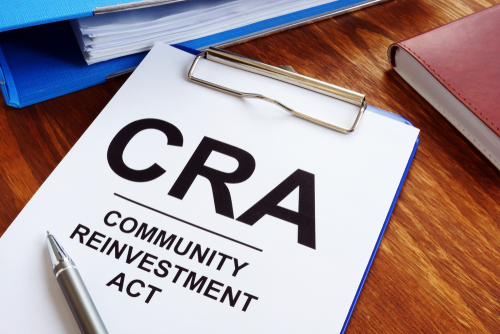A final rule to strengthen and modernize the Community Reinvestment Act (CRA) was issued this week by federal bank regulatory agencies.

The CRA is a law that was enacted nearly 50 years ago to encourage banks to help meet the credit needs of their entire communities, especially in low– and moderate–income (LMI) neighborhoods.
The final rule makes several key updates to the CRA regulations. Among them, it requires the agencies to evaluate bank performance across the varied activities they conduct and communities in which they operate so that the CRA continues to be an effective tool to address inequities in access to credit and financial services. It also promotes financial inclusion by supporting bank activities with Minority Depository Institutions and Community Development Financial Institutions and in Native Land Areas, rural areas, persistent poverty areas, and other high–need areas.
It will also update the CRA regulations to evaluate lending outside traditional assessment areas generated by the growth of non–branch delivery systems, such as online and mobile banking, branchless banking, and hybrid models. It is designed to recognize the continued importance of bank branches, while establishing a framework to evaluate the digital delivery of banking products and services for certain banks.
In addition, the final rule adopts a new metrics–based approach to evaluating bank retail lending and community development financing, using benchmarks based on peer and demographic data. The agencies will develop data tools using reported loan data that give banks and the public additional insight into performance standards. It also clarifies eligible CRA activities, such as affordable housing, that are focused on LMI, underserved, native, and rural communities.
Finally, it looks to target CRA evaluations and data collection to bank size and type, recognizing the differences in bank size and business models. For example, small banks will continue to be evaluated under the existing framework with the option to be evaluated under the new framework.
Most of the rule’s requirements will be applicable beginning Jan. 1, 2026, with the rest, including the data reporting requirements, applicable on Jan. 1, 2027. The rule was jointly finalized by the Office of the Comptroller of the Currency, the Federal Reserve Board, and the Federal Deposit Insurance Corporation.
The Consumer Bankers Association (CBA) said banks have long supported the goals of CRA and efforts to modernize law.
“We appreciate the attempts by the agencies to bring clarity and transparency to how banks are evaluated under CRA requirements. We also support the formalization of some metrics, clearer Community Development Definitions, excluding consumer credit cards from the rule, and a longer implementation timeline,” CBA President and CEO Lindsey Johnson said.
However, Johnson noted that some of the updates to the CRA could unintentionally impact the consumers it is trying to help.
“We urge regulators to take a hard look at compliance burdens give the complexity of the new rule. America’s leading banks remain committed to investing in the communities that need it most and will work to comply with the final rule,” Johnson said.